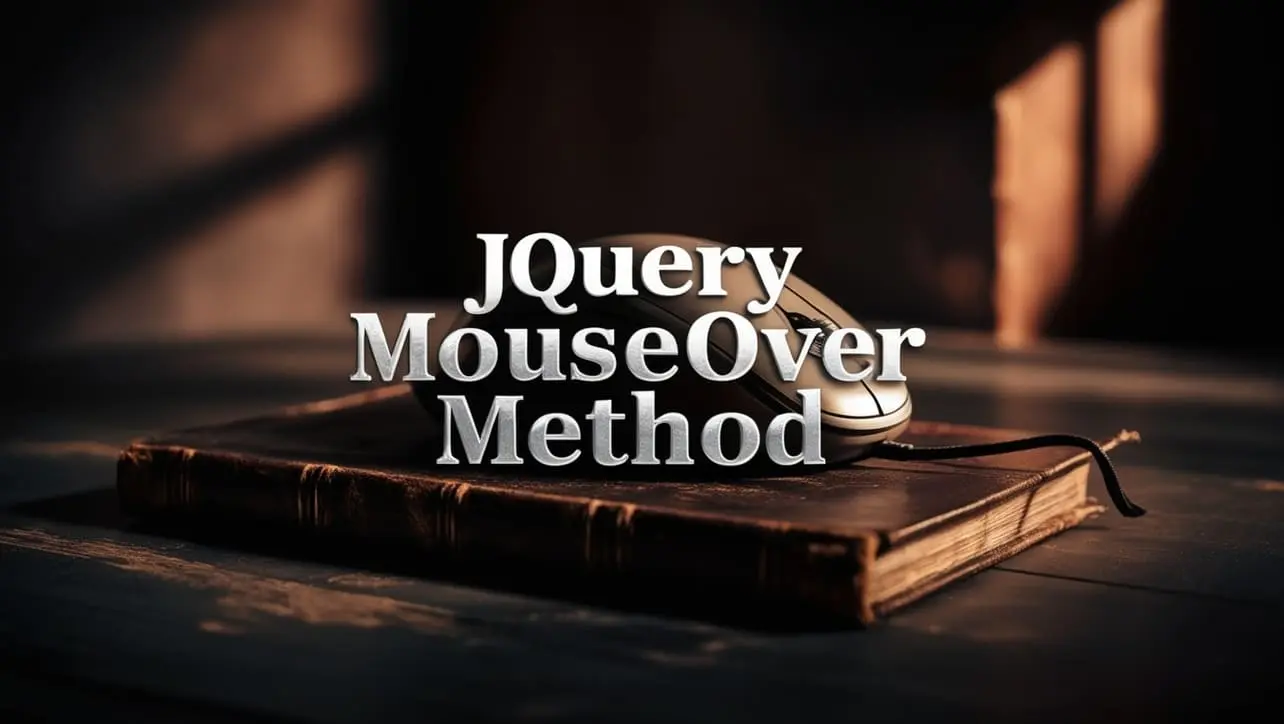
jQuery Topics
- jQuery Introduction
- jQuery Callbacks
- jQuery deferred
- jQuery selectors
- jQuery Ajax Events
- jQuery Ajax Methods
- jQuery Keyboard Events
- jQuery Keyboard Methods
- jQuery Form Events
- jQuery Form Methods
- jQuery Mouse Events
- jQuery Mouse Methods
- jQuery Event Properties
- jQuery Event Methods
- jQuery HTML
- jQuery CSS
- jQuery Fading
- jQuery Traversing
- jQuery Utilities
- jQuery Properties
jQuery .mouseover() Method

Photo Credit to CodeToFun
🙋 Introduction
jQuery offers a plethora of methods to add interactivity and enhance user experience on websites. One such method is .mouseover(), which allows you to execute a function when the mouse pointer enters an element. Understanding and harnessing the power of the .mouseover() method can greatly enhance your ability to create engaging and dynamic web pages.
In this guide, we'll explore the usage of the jQuery .mouseover() method with clear examples to help you grasp its potential.
🧠 Understanding .mouseover() Method
The .mouseover() method in jQuery is used to bind an event handler function to the "mouseenter" event, which is triggered when the mouse pointer enters the specified element.
💡 Syntax
The syntax for the .mouseover() method is straightforward:
$(selector).mouseover(function)📝 Example
Changing Text Color on Mouseover:
You can use the
.mouseover()method to change the text color of an element when the mouse pointer enters it. Here's an example:index.htmlCopied<div id="target">Hover over me!</div>example.jsCopied$("#target").mouseover(function() { $(this).css("color", "red"); });This will change the text color of the div with the ID target to red when the mouse pointer hovers over it.
Displaying Tooltips on Mouseover:
You can also utilize the
.mouseover()method to display tooltips or additional information when the mouse pointer hovers over an element. For instance:index.htmlCopied<button id="btn">Hover over me!</button> <div id="tooltip">This is a tooltip!</div>example.jsCopied$("#btn").mouseover(function() { $("#tooltip").show(); });This will display the tooltip div when the mouse pointer hovers over the button with the ID btn.
Creating Hover Effects:
The
.mouseover()method is commonly used to create hover effects, such as changing the background color or adding animations, to enhance the visual appeal of elements. Here's an example:index.htmlCopied<div class="box">Hover over me!</div>example.jsCopied$(".box").mouseover(function() { $(this).addClass("highlight"); });This will add a CSS class highlight to the div elements with the class box when the mouse pointer hovers over them.
Combining with Other Events:
You can combine the
.mouseover()method with other event methods, such as .mouseout(), .mouseenter(), and .mouseleave(), to create more complex interactive behaviors.
🎉 Conclusion
The jQuery .mouseover() method provides a convenient way to add interactivity to your web pages by executing functions when the mouse pointer enters specified elements. Whether you want to change styling, display additional information, or create hover effects, this method offers versatile functionality.
By mastering its usage, you can create engaging and dynamic user experiences that captivate your audience.
👨💻 Join our Community:
Author

For over eight years, I worked as a full-stack web developer. Now, I have chosen my profession as a full-time blogger at codetofun.com.
Buy me a coffee to make codetofun.com free for everyone.
Buy me a Coffee












If you have any doubts regarding this article (jQuery .mouseover() Method), please comment here. I will help you immediately.